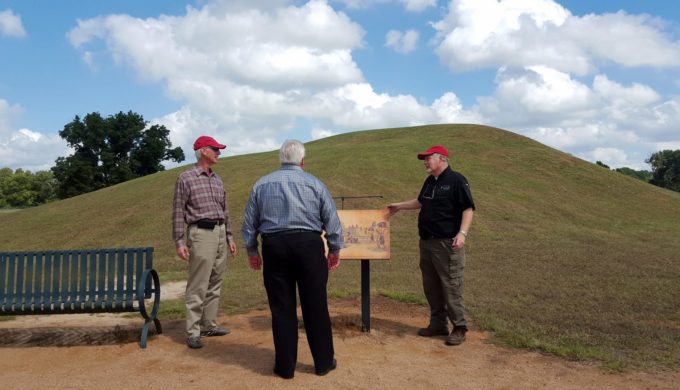Six miles southwest of Alto, Texas, on Texas State Highway 21, you’ll find two historic mounds of earth. No, they weren’t created by giant ants or volcanic eruptions. Native Americans created these hills hundreds of years ago.
A branch of the Caddo tribe, the Hasinais Caddo, are responsible for the unusual mounds. They once lived along the Red River but migrated to East Texas. The Piney Woods provided ample conditions for farming and bow making. The Bois D’arc trees grow in that area, and the tree’s strong wood makes a noble bow.
Photo: Facebook/Caddo Mounds State Historic Site
The Caddo Tribe is important to the Lone Star State. The name Texas is derived from the Spanish word Tejas, which came from a Caddo word, and guess what it means? The Caddo word means “friends,” and so Texas adopted the official motto of “Friendship.” Sadly, however, Texas didn’t always treat the Caddo in a friendly manner. The tribe is gone from Texas, but the mounds they constructed still remain.
The reasons for the two hills, friendly or otherwise, might surprise you: one was used for burial and the other for ceremonies. As many as eight bodies might be buried under a mound. Big machines didn’t exist back in those days, so Native Americans carried baskets of dirt on their heads to the site, building a small mountain one load at a time. The tribe buried their dead under the hill of dirt, and worshiped on others. These two mounds in East Texas remain.
Photo: Facebook/Caddo Mounds State Historic Site
The Caddo had interesting homes. Like their two mounds, each family built themselves a pair of side-by-side homes—a summer residence existed next to the winter home. They built the summer dwelling with a roof and wooden floor but no walls. The natives constructed the winter hut into a cone-shaped dome with a wooden frame. They then covered the walls with long grasses. These abodes contained comfortable beds and additional furniture.
Here’s a bit of sorrow. The Republic of Texas compelled the Caddo to relocate to land set aside near the Brazos River in 1854. Then, in July 1859, Texas politicians appealed to the federal government, and officials compelled the Caddo tribe to a 15-day march to a location in Oklahoma. They lost a great deal of their stock and belongings along the way. Today, the Caddo Nation of Oklahoma is federally acknowledged and is located in Binger, Oklahoma, with over 5,000 members.
Photo: Facebook/Russell Bennett
The mounds they left in East Texas are still standing—unmoved through the long centuries.
You’ll enjoy visiting the interesting and educational mound site, operated by the Texas Historical Commission. At the museum, you can explore a replica of a Caddo Village and interact with displays. For more info, visit this link.






